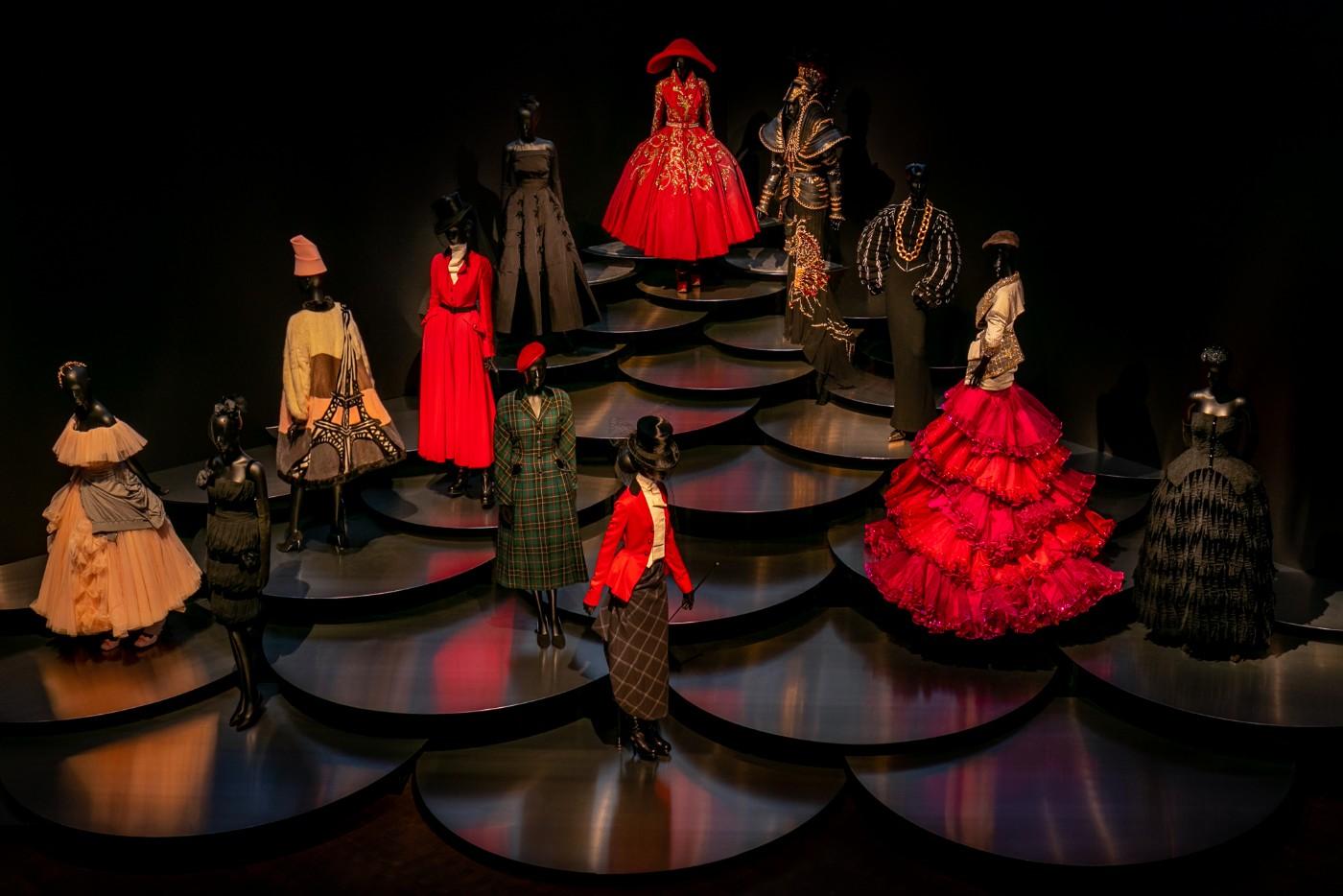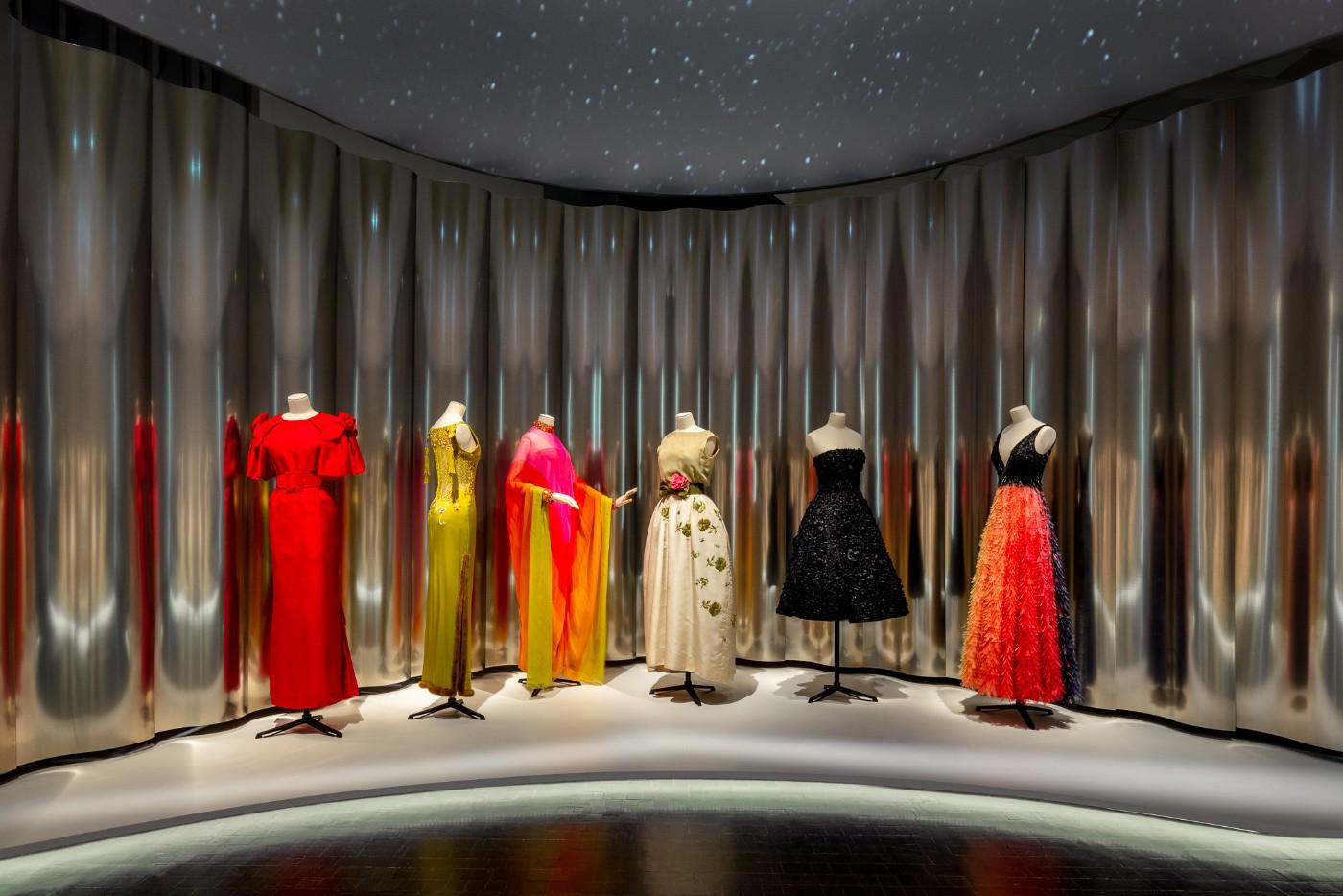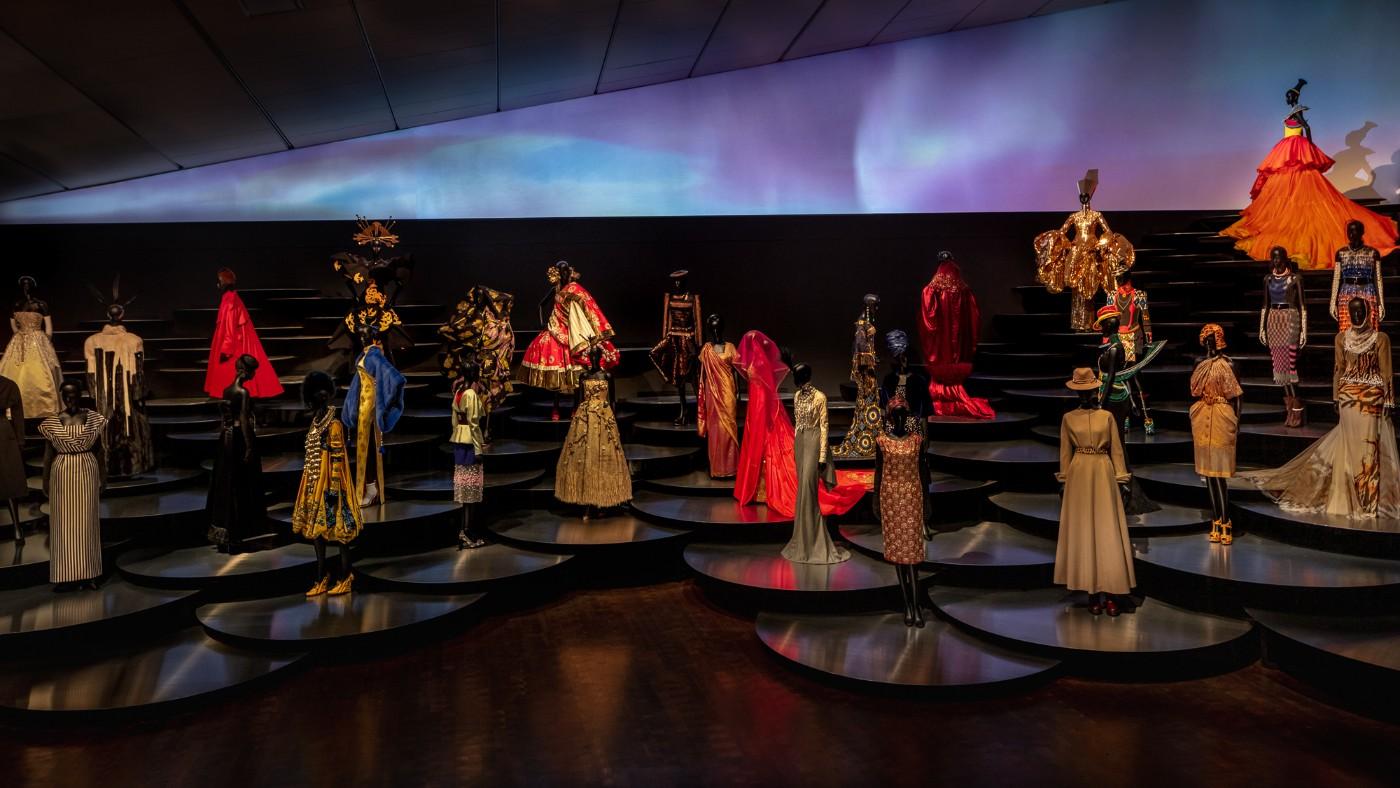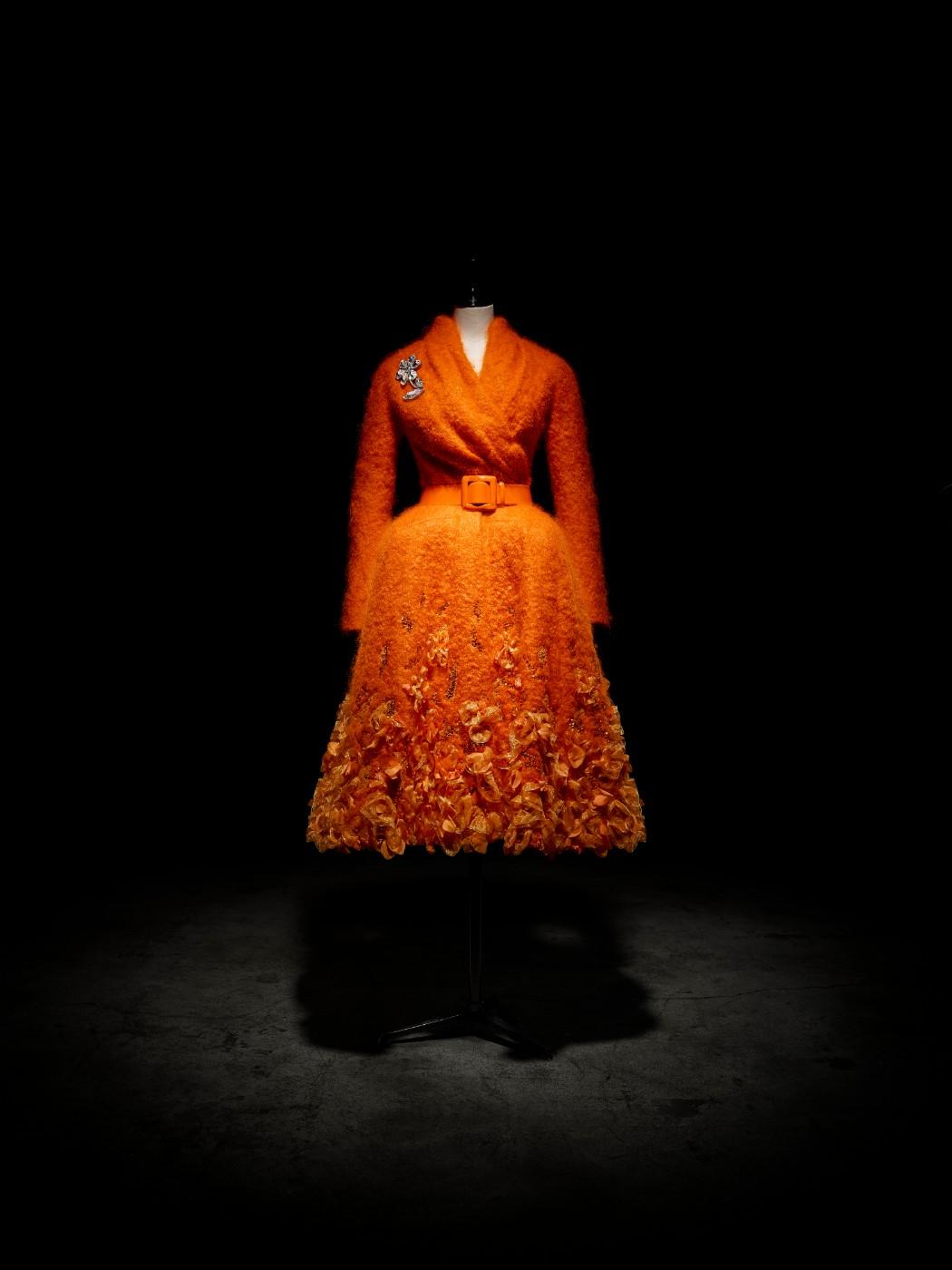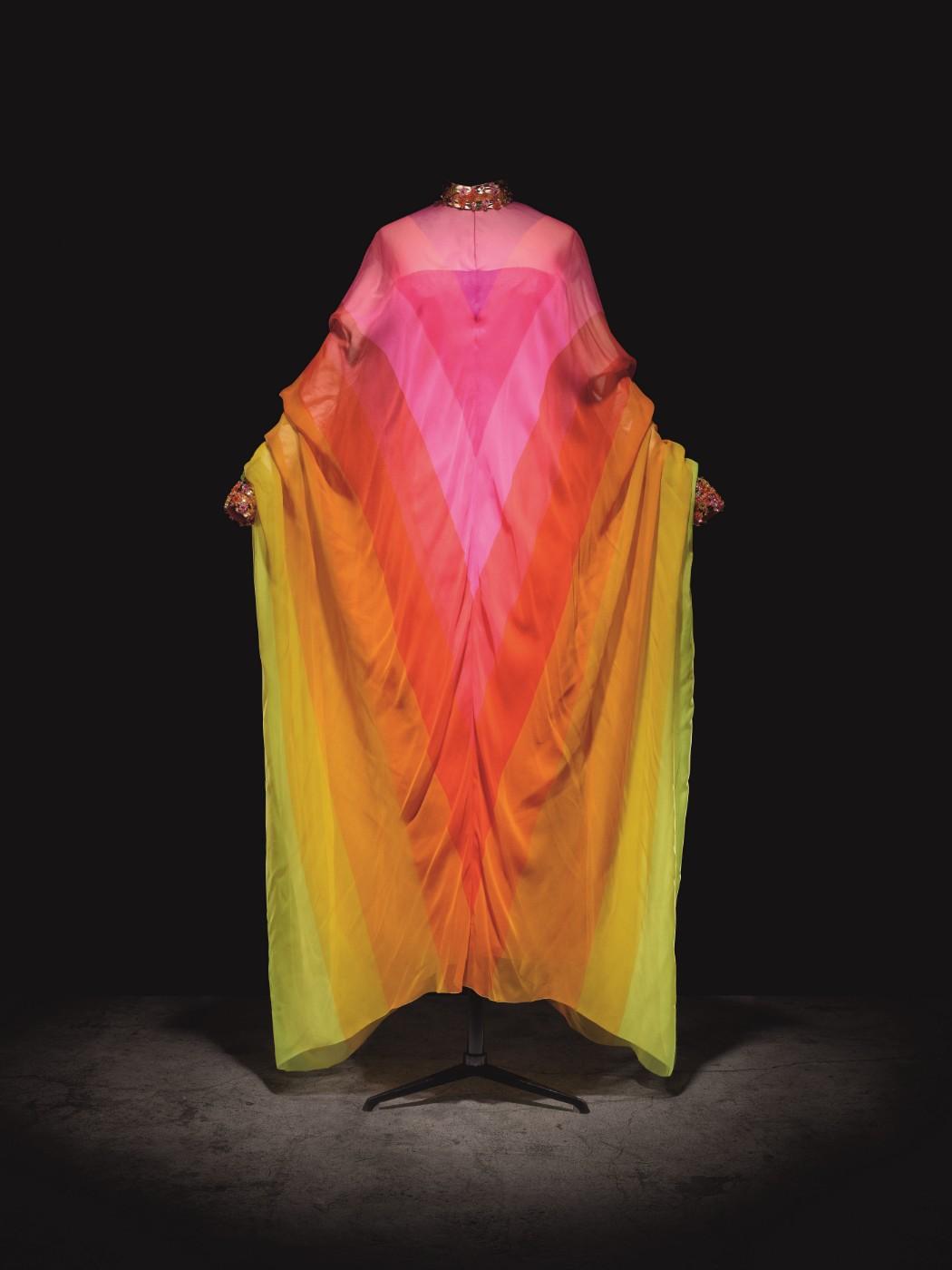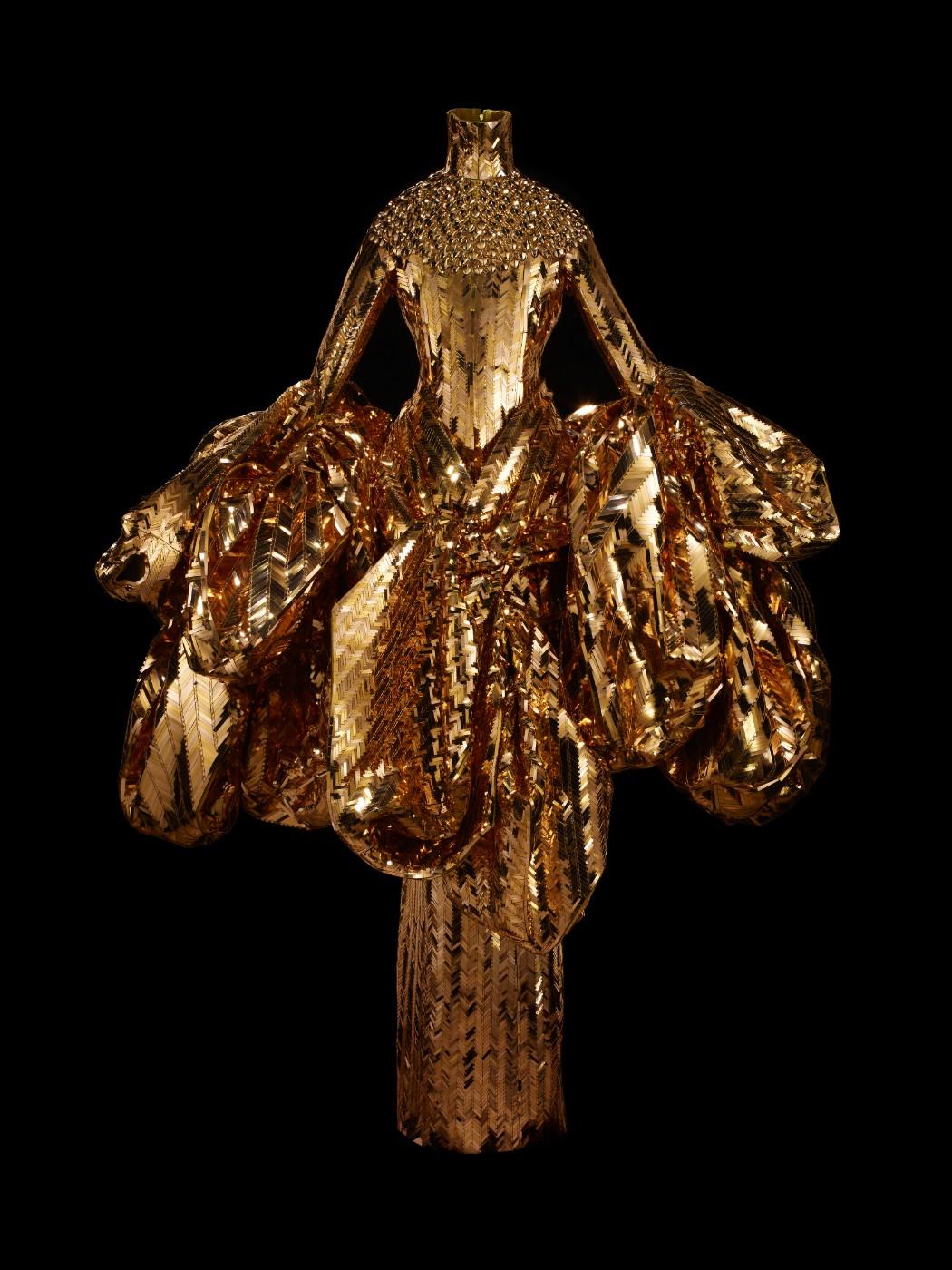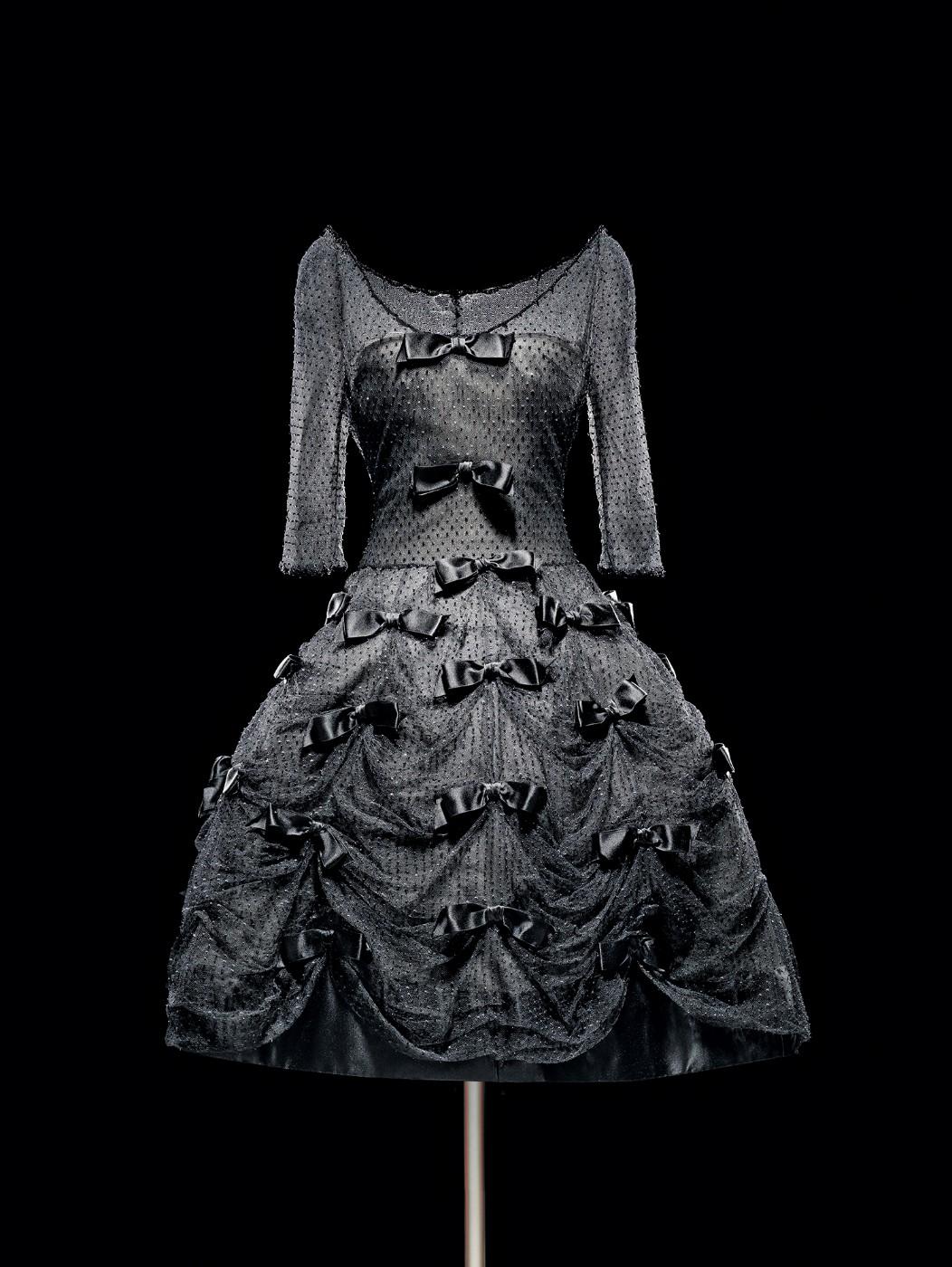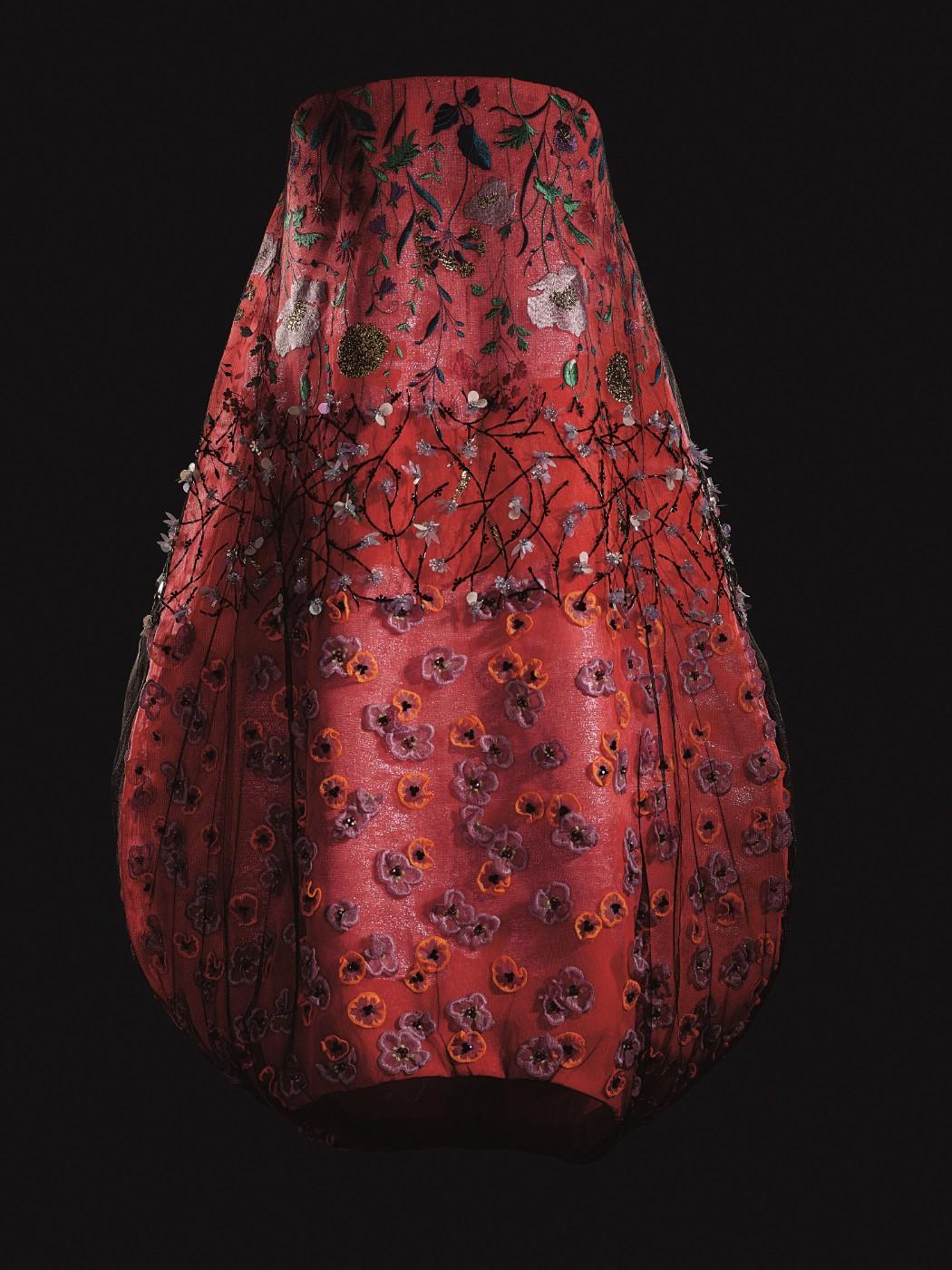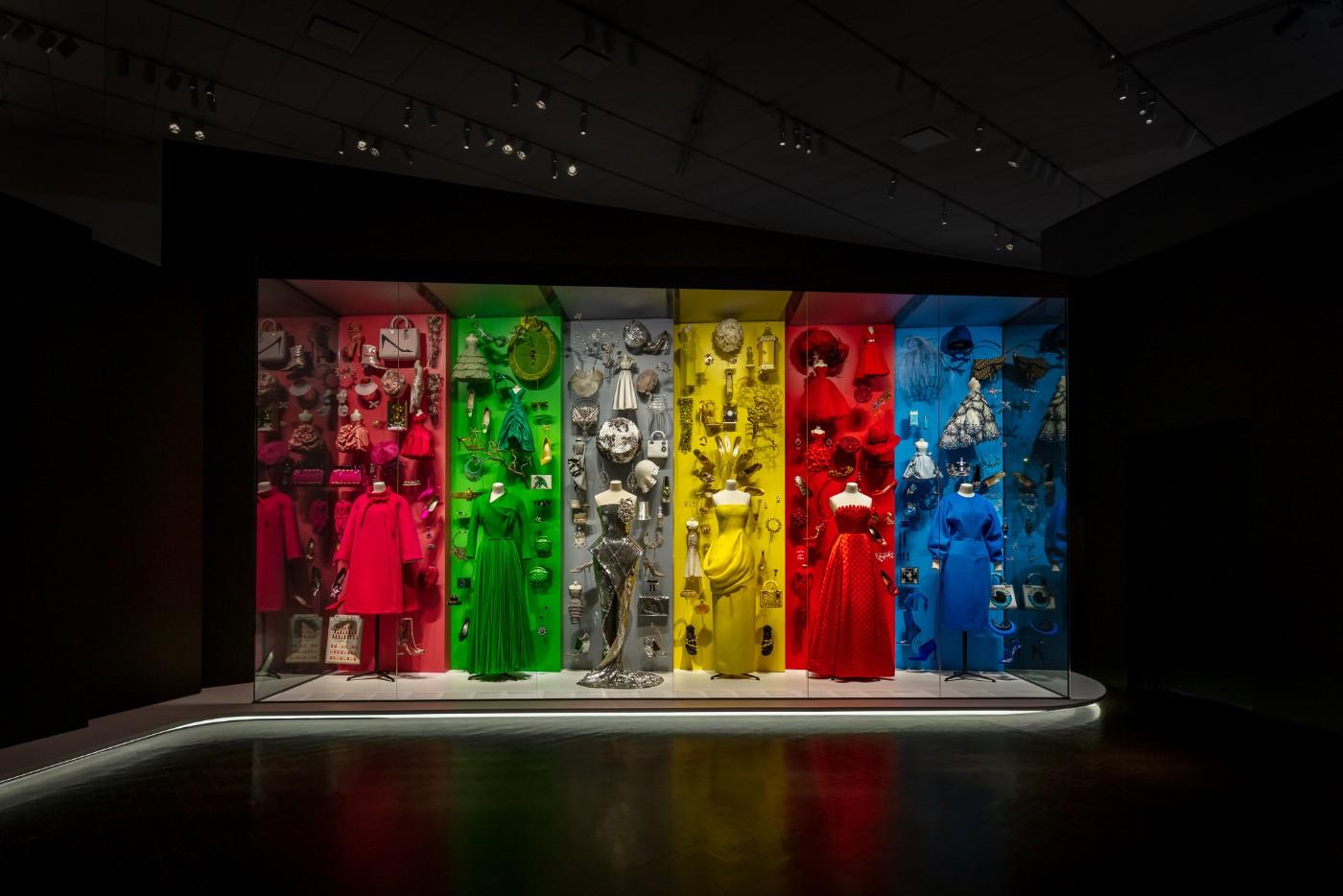The installation’s stylish architecture paired with confectionary fashions delivers an intoxicatingly lovely experience. Exhibition designer and a partner in the international architecture firm OMA, Shohei Shigematsu transformed the quirky angles of the DAM’s Daniel Libeskind-designed Hamilton Building. In homage to its titanium-clad exterior, Shigematsu opted for raw aluminum backdrops and armature.
“I was influenced by the femininity of the dresses. It was always about the garments first and supporting the narrative as an immersive—not didactic—experience,” Shigematsu said. “Aluminum is a masculine, industrial material, but the corrugated curves and the undulating panels soften the metal and subtly reflect the shapes and colors of the dresses. It lets people focus on these amazing creations.”
As a nod to Christian Dior’s obsession with gardening, the architect designed meandering walkways to evoke organic garden paths or a river winding through galleries. For the grand finale gallery, he created platforms reminiscent of flower petals.




